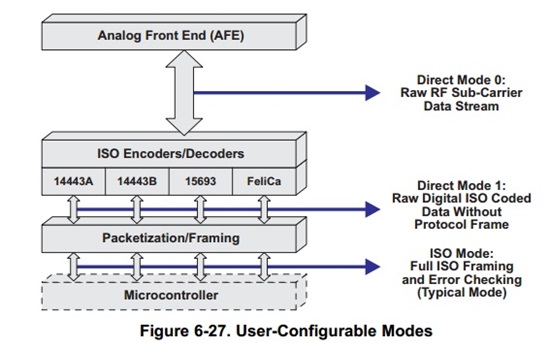Hi Guys,
I am trying to write to a mifare tag and I have read that one requires special direct mode. I have read SLOA159 but I still find the topic vague.
Can someone clarify:
(1) What is the purpose of special direct mode.
(2) How does Special direct mode differ from Direct Mode 0 and 1
We are battling to grasp how special direct mode interacts with the card and the reader


